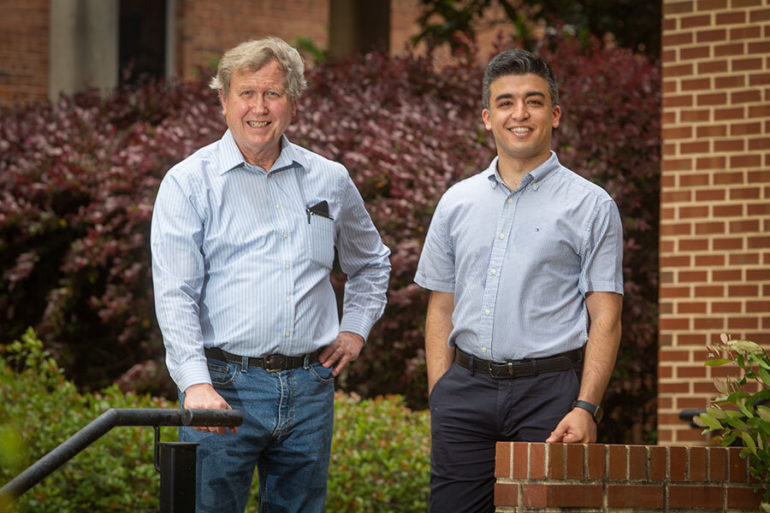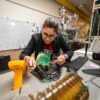They say a picture is worth a thousand words, but in science, it sometimes takes a thousand photos to tell the whole story.
Florida State University researchers have assembled the first atomic-level resolution image of part of a molecule that produces force in muscle contraction, an accomplishment that is opening new avenues of research into how muscles contract.
The process to get there involved taking 7,000 photos of the molecule at work in a curious creature called a Thai giant water bug, or Lethocerus indicus.
“This molecule is designed to be moving or at work, so each image is a little different than the next,” said Hamidreza Rahmani, a physics doctoral student working with Professor of Biological Science Ken Taylor. “Just getting to that one image is a challenge.”
The new study is published in the Proceedings of the National Academy of Science.
Scientists have long examined the flight muscles from Lethocerus indicus as a way to better understand how the human heart works. The insect’s flight muscle and a mammal’s heart both beat rhythmically.
“It’s a strange bug, but it’s lighting the way to understand muscle contraction,” Taylor said.
Not only can this bug swim and fly, it hunts for fish, frogs, small snakes and even turtles. However, these predatory insects are not without predators themselves as they make very popular snacks or sauce seasoning.
Taylor’s lab has long been focused on the flight muscles of the giant water bug, lately concentrating on a filament in the muscle that is made of a chain of proteins called myosin, which produces the power needed to contract muscles. Part of the myosin is a molecular motor. The rest of the chain allows the motors to polymerize into filaments so that the motors can act collectively. But these filaments are so small that getting a quality image of them—and thus a better understanding of how they operate—has been extremely difficult.
In 2016, Taylor’s lab published an image of the molecular motor of this protein within its filaments but with insufficient resolution to see individual atoms. Their latest image reveals the individual atoms of the tail. Getting a quality image of the tail was victory enough, but it also revealed unique traits that this motor protein possesses only when assembled into filaments.
Rahmani and Taylor’s image revealed that the myosin tail had an exceptionally long structural motif called a coiled coil—alpha helices that are coiled together like a rope. Along this structure, they identified four amino acids known as skip residues. Skip residues typically cause a coiled coil to unwind or even break its alpha-helical structure, but Taylor and Rahmani found that one of these skip residues appeared to have absolutely no effect on the structure, leaving them temporarily baffled.
Taylor began thinking about what this unusual skip residue meant when he remembered that when the muscle is activated—which allows the heads to produce tension—the coiled coil lengthens by about 1.5%. He and Rahmani believe that the particular skip residue must be related to that effect.
“The change occurs just when the muscle is going from relaxed to active but before tension develops,” he said. “So, we thought that probably this particular place is very important to that phenomenon.”
Rahmani and Taylor hope to follow up this work with an atomic resolution view of the active filament to gain an understanding of the role skip residues and coiled coil lengthening play in muscle activation.
Giant thai insect reveals clues to human heart disease
More information:
Hamidreza Rahmani et al. The myosin II coiled-coil domain atomic structure in its native environment, Proceedings of the National Academy of Sciences (2021). DOI: 10.1073/pnas.2024151118
Provided by
Florida State University
Citation:
Roach-like bug lights way to understanding how muscles work (2021, March 30)
retrieved 30 March 2021
from https://phys.org/news/2021-03-roach-like-bug-muscles.html
This document is subject to copyright. Apart from any fair dealing for the purpose of private study or research, no
part may be reproduced without the written permission. The content is provided for information purposes only.



